The Gypsy Moth (Lymantria dispar) is a Northern Hemisphere moth whose caterpillars defoliate trees in forests and farmland, causing devastation overseas.
Gypsy moth caterpillar. Photo: Ryan Hodnett, Bugwood.org | CC BY 3.0
Identification
Gypsy moths, as adults, can’t be identified with certainty unless they are dissected to examine their genitalia. Their caterpillars, on the other hand, are easy to identify once these reach a few centimetres in length.
- They are grey and hairy with five pairs of blue spots followed by six pairs of red spots. Occasional caterpillars have all-blue spots. The spots are raised.
- Caterpillars can reach 7 centimetres in length, and those below 2 centimetres may lack the coloured spots.
- The background colour of the caterpillar can vary from pale to dark grey.
- The caterpillars feed in groups, defoliating trees. Where they are active, defoliated branches are the first indication. Sections of tree can suddenly lose their leaves.
Adult moths are shown below for interest. These are females beside their egg-masses, which are tan or rust coloured or very pale, about the size of a coin (five cents up to a one dollar), with a fine felt-like appearance, from the fuzz produced from the abdomen as a covering. Australia has many native moths that look like these, and which produce similar egg masses, so you should only be suspicious if you see a group of them.
Female gypsy moths and their egg masses. Photo: Ryan Hodnett | CC BY-SA 4.0
Male gypsy moths are dark grey-brown and resemble several native moths. Their markings vary greatly. The abdomen is never pinkish-red. Because gypsy moths do not feed as adults, they lack any coiled tongue, and that distinguishes them from some Australian moths though not from others. They only live about a week, just long enough to breed.
Male gypsy moth. Photo: David Short | CC BY-SA 2.0
The Australian Government has produced a detailed guide so that entomologists can identify gypsy moths by dissecting their genitalia and examining the egg case fibres under a microscope.
Size
Full sized caterpillars are 5-7 centimetres long. Female moths have a 4-7 centimetre wingspan. Male moths have a 3-4 centimetre wingspan.
Behaviour and location
When the caterpillars are tiny they feed by day, and as they grow larger they feed at night, unless their numbers are very high in which case they continue feeding by day. When resting they may hide in bark crevices, behind bark, or amongst ground litter. If no caterpillars can be found near a freshly defoliated tree, a strip of canvas or a sack tied around the trunk may encourage some to shelter behind it.
Gypsy moth caterpillars. Photo: Tim Tigner, Virginia Department of Forestry | Bugwood.org
They can feed on an enormous range of woody plants, including some eucalypts and many foreign street and garden trees.
Adult gypsy moths, pupae and egg masses may all be found on tree trunks, walls, rocks, outdoor furniture and many other surfaces.
The egg masses are periodically intercepted on ships entering Australia, including on a bulk carrier in 2020. The areas of Australia at most risk of moth establishment are the south-west and the south-east, north to about Brisbane.
Similar species
Australia has native moths with hairy caterpillars that defoliate trees, notably the white cedar moth (Leptocneria reducta) and bag-shelter moth, or processionary caterpillar (Ochrogaster lunifer). They do not have red and blue spots.
A range of other hairy caterpillars found in Australia can be seen on the Brisbane Insects & Spiders website.
The caterpillars of bag-shelter moths build communal webbed nests in branches or at the base of trees. Gypsy moth caterpillars do not build silken nests, and do not travel in processions.
Safe collecting
Hairy caterpillars will cause rashes from their irritating hairs, so they should not be handled, except with gloves. A photo showing the coloured spots is sufficient for identification.
Who to tell
Think you’ve found gypsy moths?
If you see a caterpillar with red and blue spots, or a group of pale moths matching the scenes shown here, phone the Exotic Plant Pest Hotline: 1800 084 881. You will be put in touch with the Department of Primary Industries or Agriculture in your state or territory.
The problem
The gypsy moth is near the top of the list of insects the government wants kept out, as one of the world’s worst invasive species. From a native range in Europe, North Africa and temperate Asia, gypsy moths have spread to North America where they defoliate fruit trees, plantations and sometimes whole forests, causing billions of dollars damage, earning a ranking as the world’s third most costly insect. The voracious caterpillars feed on more than a thousand plant species. Some American forests have changed their tree composition as species favoured by the caterpillars declined.
Feeding experiments in Europe and North America show that the caterpillars thrive on some Australian trees, including the spotted gum (Corymbia maculata), forest red gum (Eucalyptus tereticornis), yellow gum (E. leucoxylon) Cootamundra wattle (Acacia baileyana) and prickly bottlebrush (Callistemon brachyandrus). In Morroco river red gums (E. camaldulensis) have been defoliated.
The caterpillars are also a social problem because their hairs cause rashes.
Further information
- Australian Government: Gypsy moths.
- Wikipedia.
- Michigan State University: Gypsy moth life cycle.









